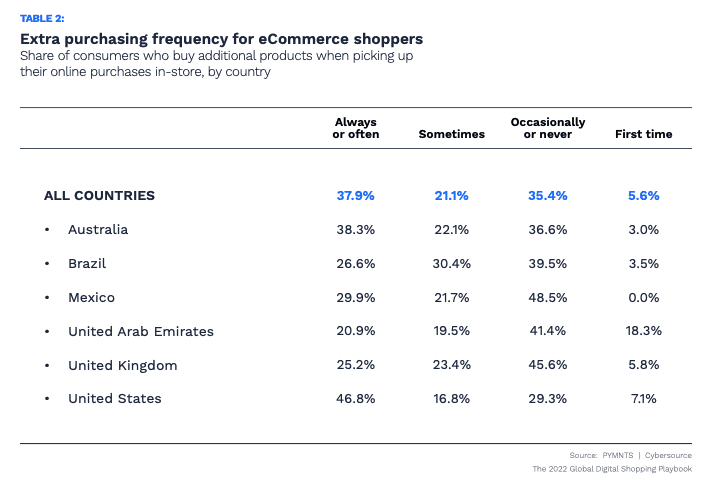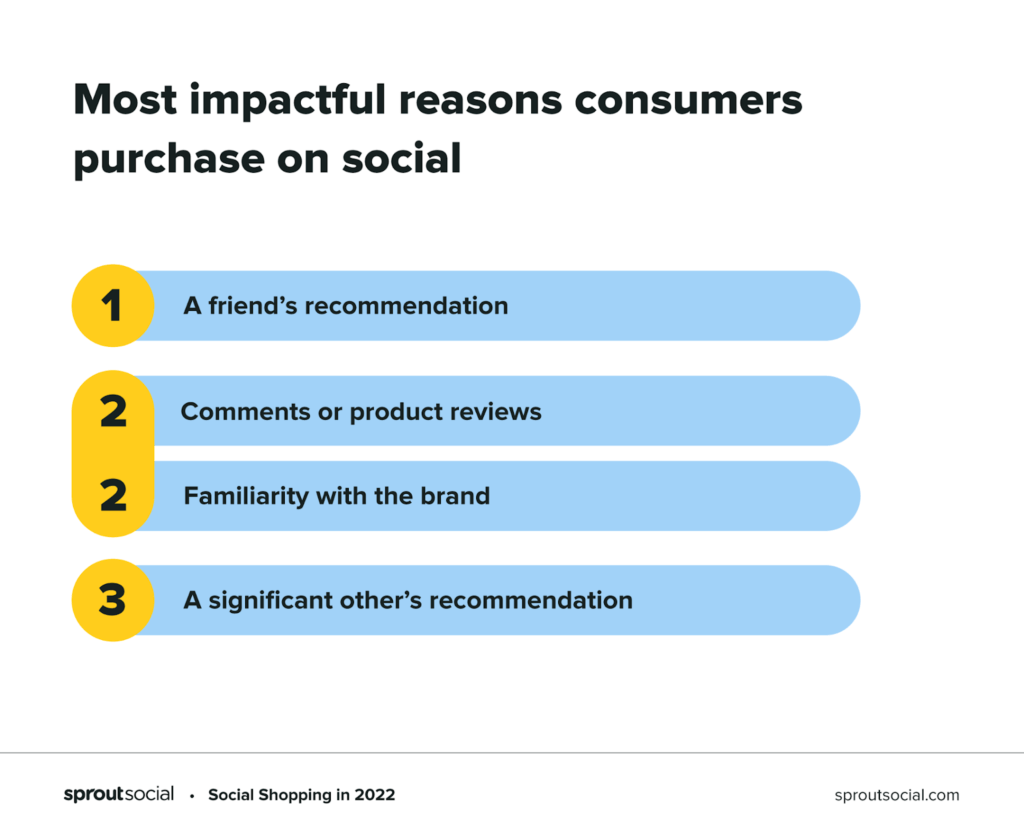In an increasingly interconnected digital landscape, businesses have a world of opportunity (quite literally) to sell to a global audience. Customers worldwide are open to buying products from brands that offer them a truly global experience. This is why having a digital storefront in today’s market is essential. It’s the fastest way to grow a new business, establish a worldwide reputation, and make millions in revenue.
To express it in a few words, if you own a business and want to gain access to a global audience, you should take global e-commerce very seriously.
However, developing a global e-commerce marketing strategy is not an easy endeavor. Business owners are often overwhelmed by questions such as:
- Which countries have the most demand for their products?
- How to handle payments and currencies for international customers,
- What technology to invest in to give potential buyers the best brand experience,
and many more.
If you are also plagued with these doubts, you should read this blog.
In this article, we will cover the top 30 statistics that will help you build an overview of the global e-commerce industry. Following this, we will delve into five of the most popular e-commerce trends in 2024 that can further enable you to build a winning strategy in Today’s fiercely competitive market. Let’s get started.
But first, here are some important statistics at a glance before you really jump into the article.
- The global e-commerce market is supposed to reach a total of $6.3 trillion in market value in 2023.
- 58.4% of the online audience makes at least one purchase every week.
- E-commerce websites are expected to take up 22.3% of retail sales in 2023.
- Mobile commerce is expected to account for 42.9% of total e-commerce sales by 2024.
- The average shopping cart abandonment rate is 70.19% across e-commerce markets.
*Sources are provided in the statistics section below.*
Now, we will proceed to highlight more important eCommerce statistics below. However, first, let’s understand what global e-commerce is.
What is Global E-Commerce?
Global e-commerce is the practice of selling products or services online to customers in other countries without being limited by geo-political borders. Global e-commerce enables retailers to enter non-native markets and attract new customers for their offerings, unlike local e-commerce, which restricts sales to a retailer’s nation.
It is now easier than ever for businesses to expand internationally because so many e-commerce platforms, marketplaces, and digital solutions are available to merchants wishing to sell online. Global e-commerce enables businesses to:
- expand into foreign markets quickly,
- find the best product-market fit,
- build an international brand presence quickly,
- shorten the sales cycle while increasing the number of sales,
- generate a lot more revenue, and
- skyrocket business growth as a global brand.
Now, let’s give you what you are here for without further ado. In this next section, we will cover 30 industry-defining statistics that will provide you with an idea of what the e-commerce market will look like in 2024.
Top 30 Global E-Commerce Statistics You Need to Know
Here are the top 30 global e-commerce statistics of 2024 that you need to be aware of:
- The global e-commerce market is expected to reach $8.14 trillion in 2026. (Source: Insider Intelligence)
- Retail e-commerce sales across the world have increased by 10% in 2023, reaching 5.8 trillion dollars (Source: Insider Intelligence )
- The U.S. e-commerce market is expected to experience a continuous increase in revenue, reaching a new peak of 1.1 trillion U.S. dollars in 2029, marking a 51.25 percent increase from 2024 to 2029. (Source: Statista)
- The gap between e-commerce sales growth and retail sales growth has shrunk in 2022—differing only by two-tenths of a percentage point. (Source: eMarketer)
- Amazon took up 37.6% of e-commerce sales in the U.S. in 2023, followed by Walmart, Apple, eBay, and Target. (Source: Statista)
- Amazon is the biggest consumer internet and online service company worldwide, with a market cap of approximately 1.34 trillion U.S. dollars as of June 2023. (Source: Statista)
- Amazon dominates the global market with a market cap of 1.34 trillion U.S. dollars, while Alibaba.com ranks second with a market cap of 214 billion U.S. dollars. (Source: Statista)
- Amazon and eBay are ranked high in mobile web traffic, with 4.8 billion and 1.2 billion monthly visits in 2023, respectively. (Source: Statista)
- As of 2023, the e-commerce categories generating the most revenue were consumer electronics ($781.3 billion) and consumer electronics ($673.6 billion). (Source: Data Report)
- In Q3 2023, online shoppers spent an average of 2.74 U.S. dollars per visit across all categories. (Source: Statista)
- Southeast Asia dominates the top 10 eCommerce markets with 18.6% growth in 2023, with Mexico and the Philippines leading the pack with 25% and 24% online sales. (Source: Statista)
- 56.1% of the online audience makes at least one purchase every week. (Source: Data Report)
- China is expected to cross the $3 trillion e-commerce sales mark in 2023, accounting for more than 50% of worldwide e-commerce sales this year. (Source: eMarketer)
- 31.9% of online shoppers discover brands with search engines, the most common channel for brand discovery in 2024, above T.V. ads. (Source: Data Report)
- E-commerce accounted for 19% of global retail sales in 2023, with forecasts suggesting it will account for nearly 22.6% by 2027. (Source: eMarketer)
- 66% of online shoppers are attracted to brands that are open about their employment practices, company culture, and how the materials for their products are sourced. (Source: Business Insider)
- 62% of internet users concur that past customer experience and service have significantly influenced their future purchase decisions. (Source: Shopify).
- Social media commerce sales are supposed to reach $8.5 trillion U.S. dollars by 2030. (Source: Statista)
- 55% of internet users aged between 18 and 24 in the U.S. purchased social media in 2021, making millennials the largest group amongst digital shoppers on social media sites. (Source: Statista)
- Brand purpose is now more vital for 78% of marketers since after the 2020 global Covid pandemic. (Source: WARC)
- 49% of online shoppers buying from social media sites concur that the recommendations of their favorite influencers influence their purchase decisions. (Source: Digital Marketing Institute)
- Mobile commerce is expected to account for 42.9% of total e-commerce sales by 2024. (Source: Business Insider)
- By 2027, M-commerce will account for 49.8% of U.S. e-commerce sales. (Source: Insider Intelligence)
- Mobile phones dominate global digital commerce website visits and online orders, accounting for 78% of retail site traffic in Q4 2023, generating two-thirds of online shopping orders. (Source: Statista)
- The average shopping cart abandonment rate is 70.19% across e-commerce markets. (Source: Baynard Institute)
- Consumers are ready to pay a sustainability premium of 5% or more. (Source: PwC)
- As a result of the impending demise of third-party cookies, marketers will only be able to use first-party data going forward and will not be able to generate a profit from data-driven customization. (Source: WARC)
- 69% of consumers are okay with brands personalizing their campaigns as long as they are only using the data shared by the customers directly. (Source: Segment)
- Online shoppers are 3x more likely to avoid brands that over-personalize than those that use no personalization. (Source: Gartner)
- Retail mobile sales reached $2.2 trillion in 2023, accounting for 60% of global e-commerce sales, with analysts forecasting $3.4 trillion in 2027. (Source: Statista)
- Digital and mobile wallets are the most popular payment methods used by 49% of online shoppers in 2022, and it’s expected to increase to over 54 percent in 2026. (Source: Statista)
- Over 76% of online shoppers look for free delivery on their purchases while buying products from e-commerce websites. (Source: Digital Commerce 360)

- Over 2,737,948 active websites are powered by Shopify worldwide, holding more than 20.26% of the U.S. market share for e-commerce platforms. (Source: Builtwith)
- The average conversion rate across e-commerce websites was 1.88% as of January 2024. (Source: IRP Commerce)
- E-commerce fraud is expected to account for $48 billion in losses in 2023. (Source: Statista)
- 46.8% of consumers from the U.S. always pick up additional products when they make online purchases in-store. (Source: PYMNTS)

- The market for e-commerce fraud detection and prevention is predicted to grow to over $69 billion by 2025. (Source: Statista)
- 40% of U.S. internet users use voice assistants monthly, necessitating e-commerce brands to optimize their sites for voice commerce to stay competitive. (Source: Hubspot)
In this next section, we will highlight the top five trends driving the global e-commerce industry in Today’s dynamic times.
5 Trends Driving the Global e-Commerce Industry Today
Want to know which trends are driving the e-commerce market in 2024? Here are five to watch out for when you are creating your global e-commerce strategy:
1. Mobile Shopping:
Global e-commerce trends were significantly impacted by the pandemic. Even while sales from e-commerce and retail have stabilized in 2023, more and more individuals are shopping online from their smartphones.
M-commerce, or mobile commerce, is the practice of making online purchases using a smartphone or tablet. Over the coming years, mobile e-commerce will continue to grow rapidly. Smartphone purchasing is made easier by technological advancements like social shopping, 5G WiFi, and branded mobile apps.

There is more to mobile commerce than just using your phone to make purchases. It covers any purchase completed through a mobile browser or app, including interacting with mobile advertisements, chatting with sales representatives, and brand browsing on a smartphone.
Furthermore, we project that mobile shopping will increase in 2024 because it interacts with other popular e-commerce features like live streaming, augmented reality, and in-app purchases.
To cash in on this trend, you should:
- Examine your present options for mobile shopping and try out some of the hottest aspects of commerce.
- Keep an eye out for new features in e-commerce products.
- Anticipate increasing numbers of branded shopping applications, marketing initiatives via SMS and Facebook Messenger, and an increase in social commerce content on Instagram and TikTok.
2. Social e-Commerce:
In 2022, social commerce was king. However, with an impending economic collapse, customers are becoming more choosy about what they buy and have more sophisticated wants. However, this trend shows no sign of slowing down. The Social Shopping Report from Sprout shows that 98% of consumers have made at least one purchase from social media sites in 2022. Moreover, social media product searches are catching up, as the Consumer Trend Report from Zeropark indicates.

It is likely that your competitor brands have already begun selling on social media or have plans to do so if you haven’t. The logical next step for platforms as creator marketing matures is to assist companies and creators in selling to customers. Buying directly from social media sites like Instagram reduces the likelihood of customers abandoning their carts. Companies like Facebook have already made numerous options available to entrepreneurs who want to sell directly on their platform.
This trend will continue to increase in the future. Instagram Checkout and Instagram Shopping are two excellent examples of how social media businesses use this chance.
To cash in on this trend, you should:
- Think about adding new social network in-app shopping possibilities.
- Reach out to your clients where they are and identify which feature or social shopping network they use the most.
- Give social media users access to special in-app deals and discounts as a reward.
3. Big Data
While some customers are worried about their data and privacy concerns, others desire a personalized experience. Now, more customers than ever are aware that e-commerce websites gather data. However, they are still in the dark about how this information will be used or whether it puts them in danger. The opinions on the advantages of big data and how it affects customized shopping experiences are, therefore, very divided.
Using big data, you can learn about your customers’ interests, including their likes and buying habits. With this knowledge, you can improve their experience. Through the analysis of browsing and purchase history, you can present them with things they may find interesting and extend exclusive offers. It also facilitates the customization of content, marketing offers, and product recommendations. Each customer’s particular demands and interests can be catered to.
With major corporations such as Google announcing that they will no longer allow third-party cookies in 2023, brands are starting to use zero-party data. One attempt to circumvent the problems associated with using third-party cookies is to obtain data directly from customers who have approved. Marketers will need to learn how to strike a balance between the intriguing duality of customization and data/privacy concerns as the future moves towards zero-party data.
To cash in on this trend, you should:
- Think about implementing zero-party data and gathering client information inside.
- To secure the information about your customers, determine and put the proper security and privacy measures into place.
- Customers should know upfront how your company gathers, handles, and uses their data.
4. Augmented Reality
Augmented Reality (A.R.) has revolutionized various industries, including fashion, cosmetics, and home décor. With augmented reality (A.R.) commerce, which uses 3D mapping to enable customers to test out things or sample experiences before making a purchase, the phrase “try before you buy” takes on a whole new meaning.
This is because it puts products and services at the customers’ fingertips. For brands to benefit from augmented reality commerce, physical stores are unnecessary. Augmented reality (A.R.) offers customers a preview of products and experiences without actually purchasing them. It does not require access to a physical store and allows customers to test what they want to buy on their own time, acting as a cost-effective sales representative for your brand.

Demand and popularity for augmented reality (A.R.) technology are predicted to rise as it advances and becomes more widely available and user-friendly. E-commerce businesses without A.R. experiences will soon lose ground to their rivals as online consumers grow acclimated to A.R. E-commerce businesses must use augmented reality to stay competitive, improve consumer satisfaction, and lower return rates.
To cash in on this trend, you should:
- Think about putting money into A.R. e-commerce functionality via the app for your company or an A.R. app like Snapchat.
- Use social media to highlight how customers may use your brand’s augmented reality solutions.
5. On-Site Personalization
Most customers seek custom e-commerce experiences. Moreover, they are also more inclined to stick with retail businesses that provide a tailored experience. According to the State of Personalization 2022 Report by Segment, 49% of consumers feel they are likely to make repeat purchases following a personalized shopping experience with a business.
Some examples of on-site personalization include product recommendations, deals and discounts, and a consistent shopping experience across several channels (website, mobile, and social media). It may also entail providing an assortment of payment options. Customers may simply leave the website without completing their transaction if their payment option is unavailable.

Personalization may also involve multilingual localization. A study from Flow.io shows that over two-thirds of native English online shoppers would not shop from an international brand that does not allow its pages to be translated into English. Web Pages such as product descriptions, product reviews, and checkout terminals must be in the customer’s preferred language.
Companies that are increasing their efforts to personalize their products are seeing success, and this trend is expected to bring some great results for global businesses.
To cash in on this trend, you should:
- Increase the scale of your personalization efforts by providing special deals and product recommendations.
- Offer up-to-date payment options such as Apple Pay or buy-now and pay-later services like Klarna.
- Enhancing customer service is a top priority on all social media platforms.
Final Thoughts
With so many statistics and trends to monitor, it is easy for business owners and marketers to become sidetracked. However, to summarize the above-mentioned data in a nutshell, we will simply say that e-commerce is becoming a necessity in our daily lives. International expansion is set to become increasingly imperative for companies (even local ones) as technologies develop and our world becomes more interconnected.
We hope the statistics and trends listed above have successfully helped you form an idea of the state of global e-commerce and its incredible relevance in Today’s digital landscape. Using the right strategies, technologies and e-commerce business tools any business owner in this modern age can manage foreign sales and its associated complex attributes, such as conversions, tariffs, payments, taxes, compliance, and more. Leverage a well-crafted global e-commerce strategy Today and establish your business as a global brand in this digital era.
Check the latest Stats Guide:
Top Global Podcast Statistics
60+ SEO Statistics To Keep An Eye In 2024
Top 7 Business Trends In 2024: What’s In Store This Year?



